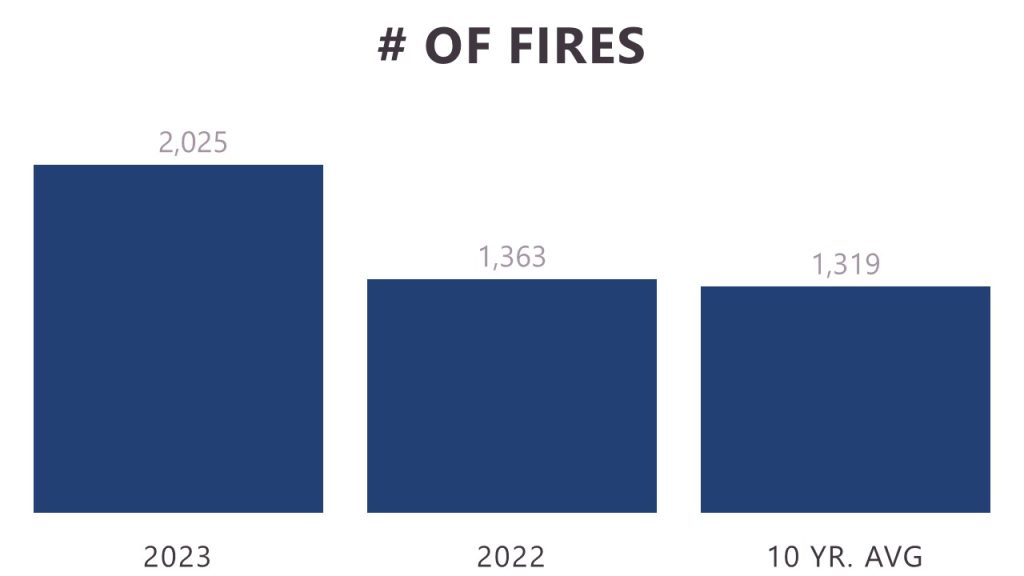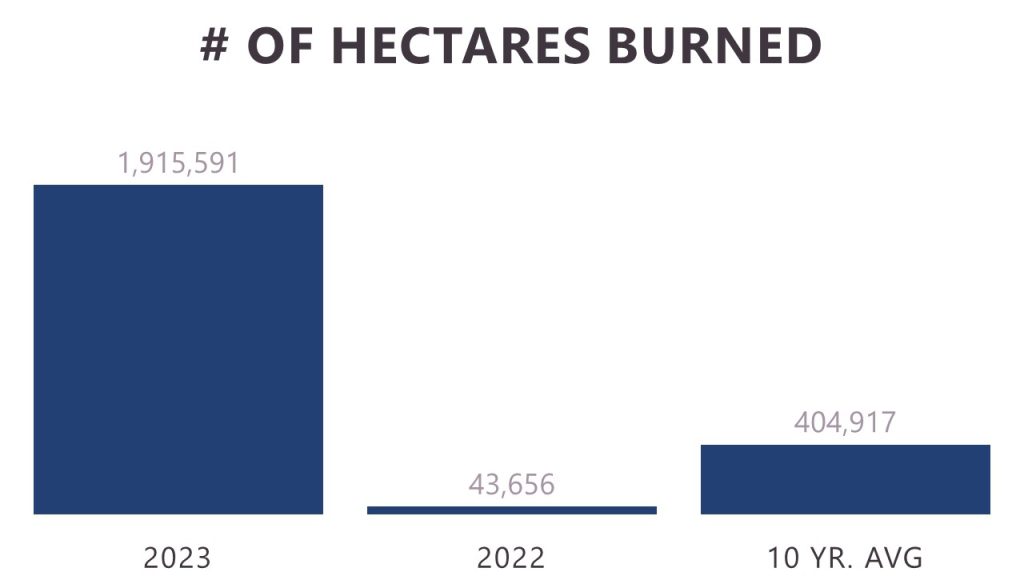A cool, dry spring has resulted in delayed green-up. Combined with drought conditions over the winter, fine fuels continue to be quite susceptible to ignition. Above seasonal temperatures last weekend further increased wildfire risk. This has resulted in 104 human-caused wildfires since April 1, 2023. While the predominance of human-caused fires is not unusual for this time of year, the dryness of fuels has resulted in fires growing quickly, especially in windy conditions.
This weekend, conditions are expected to return to seasonal in the southern half of the province. However, the Prince George Fire Centre is expected to remain hot and dry. Fire risk and behaviour is expected to decrease in areas experiencing green-up. Increased fire risk may persist in areas where moisture content of fuels remains low, a phenomenon known as the spring dip.
Onboarding and training of wildfire personnel is on-going, and crews are supporting with flood response in the Northwest, Kamloops and Southeast Fire centres.
Wildfires of Note
- Red Creek (G80223)
- Boundary Lake (G80220)
- Teare Creek (G30210)



Fire bans and restrictions
| Fire Centre | Campfires | Category 2 Open Burning | Category 3 Open Burning | Forest Use and Area Restrictions |
|---|---|---|---|---|
| Cariboo Fire Centre |  |  |  | N/A |
| Coastal Fire Centre |  |  |  | N/A |
| Kamloops Fire Centre |  |  |  |  |
| Northwest Fire Centre |  |  |  | N/A |
| Prince George Fire Centre |  |  |  | N/A |
| Southeast Fire Centre |  |  |  | N/A |
Considerations for open burning
In British Columbia it is common for grass fires to ignite and spread quickly in early spring. Typically, fine fuels remain quite dry in March and April, when daytime temperatures begin to increase but the snow remains at high elevations. While these dry conditions are favourable for prescribed fire and open burning, the risk and prevalence of human-caused wildfires increases as a result. As the province transitions into spring weather patterns, it is important to remember that much of the northeast and southwest regions of the province were experiencing drought conditions late into the fall last year, which may impact spring burning conditions.
Open burning can be a useful tool when conducted responsibly while it is permitted. If conducted irresponsibly or in unsafe conditions, the potential of a human-caused wildfire increases. Human-caused wildfires are completely preventable. Always practice safe, responsible fire use where permitted. If there are no open burning prohibitions established by the Province, it is important to check with local government authorities for any other open burning restrictions.
Learn more: Open Burning 101
In early spring, most escaped open burns have one or all of the following factors in common:
- the burn has been left unattended (even for a very short duration)
- changes in wind behaviour
- poor venting conditions
In order to have a safe and successful burn:
- ensure an open burn is never left unattended
- use tools like windy.com (this includes local wind speeds and direction, and provides more detail than high-level weather forecasts – there is also a layer for windy.com data available in our mobile app)
- check the venting index
The next Provincial Wildfire Status Update will be provided on May 11, 2023.
